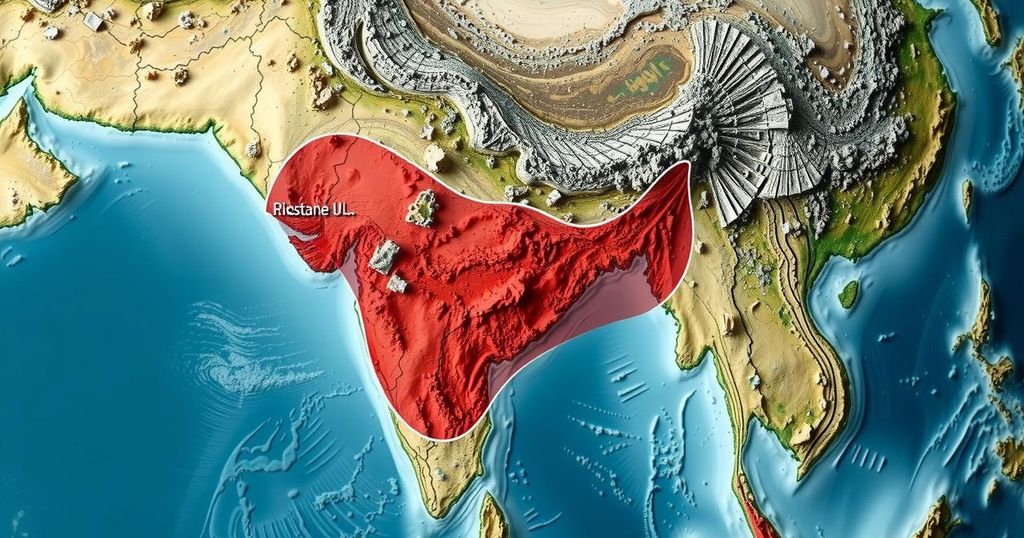India’s Vulnerability to Earthquakes and Global Rankings
On January 7, 2025, a 7.1 magnitude earthquake struck Bihar, India, near the Nepal border, marking the strongest quake since the 2015 Nepal earthquake. Globally, China is the most affected nation, recording 186 major earthquakes from 1990 to 2024. India ranks seventh with 58 significant earthquakes and has a substantial portion of its territory at risk from seismic events, primarily in the Himalayan region.
On January 7, 2025, a series of earthquakes struck southern Tibet, near the Nepal border, significantly impacting northern India, particularly Bihar, which experienced a considerable earthquake measuring 7.1 on the Richter scale. The epicenter was located 93 kilometers northeast of Lobuche, near the Nepal-Tibet frontier, marking this event as the most powerful since the catastrophic Nepal earthquake in April 2015, which resulted in approximately 10,000 fatalities.
Asia is notably susceptible to seismic activities; China and Indonesia are among the top countries in terms of earthquake frequency and intensity. According to the United States Geological Survey (USGS), Indonesia ranks as the most earthquake-prone nation, having recorded 2,212 significant seismic events. In a detailed analysis of earthquakes from 1990 to early 2024, the National Oceanic and Atmospheric Administration (NOAA) found that China experienced the highest number of major earthquakes, totaling 186, followed by Indonesia with 166.
India, ranking seventh globally, has faced 58 significant earthquakes during this period. The country’s geographical situation at the intersection of multiple tectonic plates contributes to its vulnerability to earthquakes. An alarming 59 percent of India’s land is considered at risk of moderate to severe seismic events, particularly in the Himalayan region, where major quakes have historically occurred, including significant earthquakes in Shillong, Kangra, Bihar-Nepal, and Assam-Tibet, each exceeding a magnitude of 8.0.
The current seismic events underscore the need for continued monitoring and preparedness in affected regions.
The topic of seismic activity and earthquake vulnerability is crucial in understanding the risks associated with natural disasters. Countries like China, Indonesia, and India hold significant records of earthquake occurrences due to their geographical locations along major tectonic plate boundaries. The consequences of severe earthquakes can be devastating, as evidenced by historical events that have caused considerable loss of life and property. This article addresses recent earthquakes and provides a comprehensive overview of seismic activity in various countries.
In conclusion, India is among the countries significantly impacted by earthquakes, ranking seventh globally in terms of recorded major seismic events. The recent 7.1 magnitude earthquake near the Nepal border emphasizes the nation’s vulnerability due to its unique geographical position. With a substantial portion of its land at risk, India must continue to enhance preparedness and resilience against potential seismic hazards. The data from NOAA highlights the severe implications of earthquakes across various nations, reinforcing the need for ongoing monitoring and research.
Original Source: indianexpress.com




Post Comment